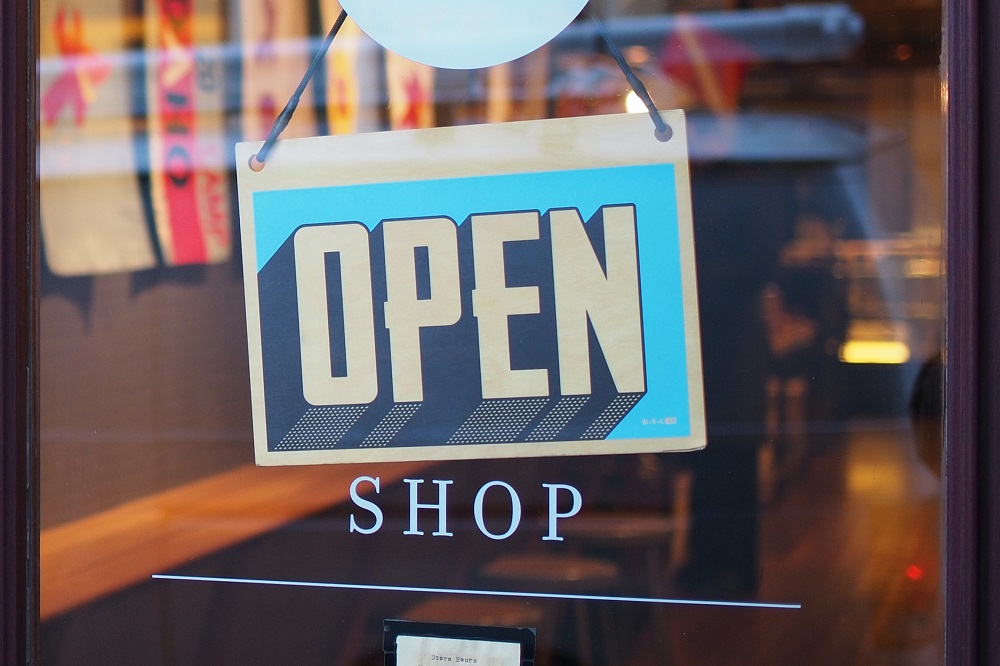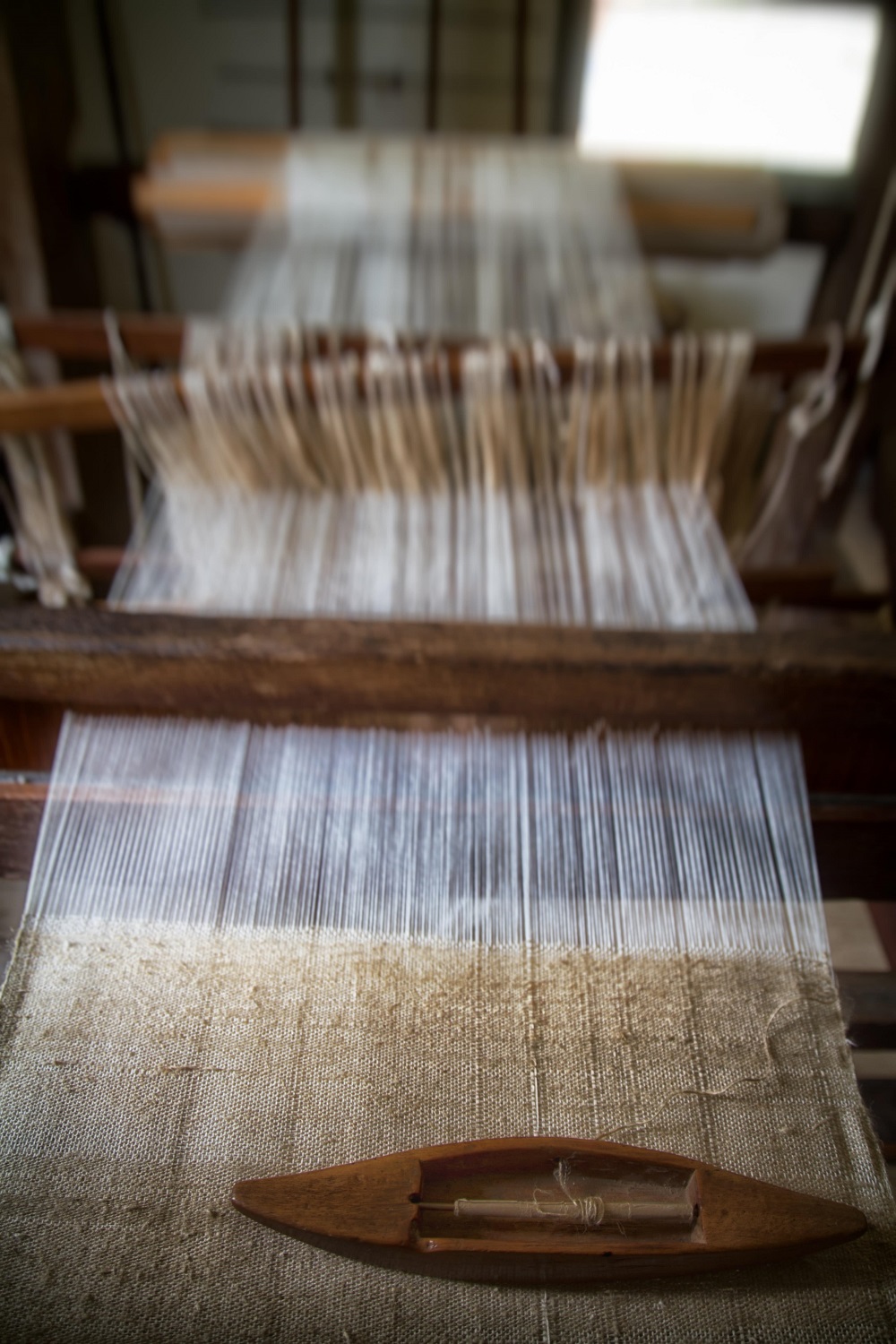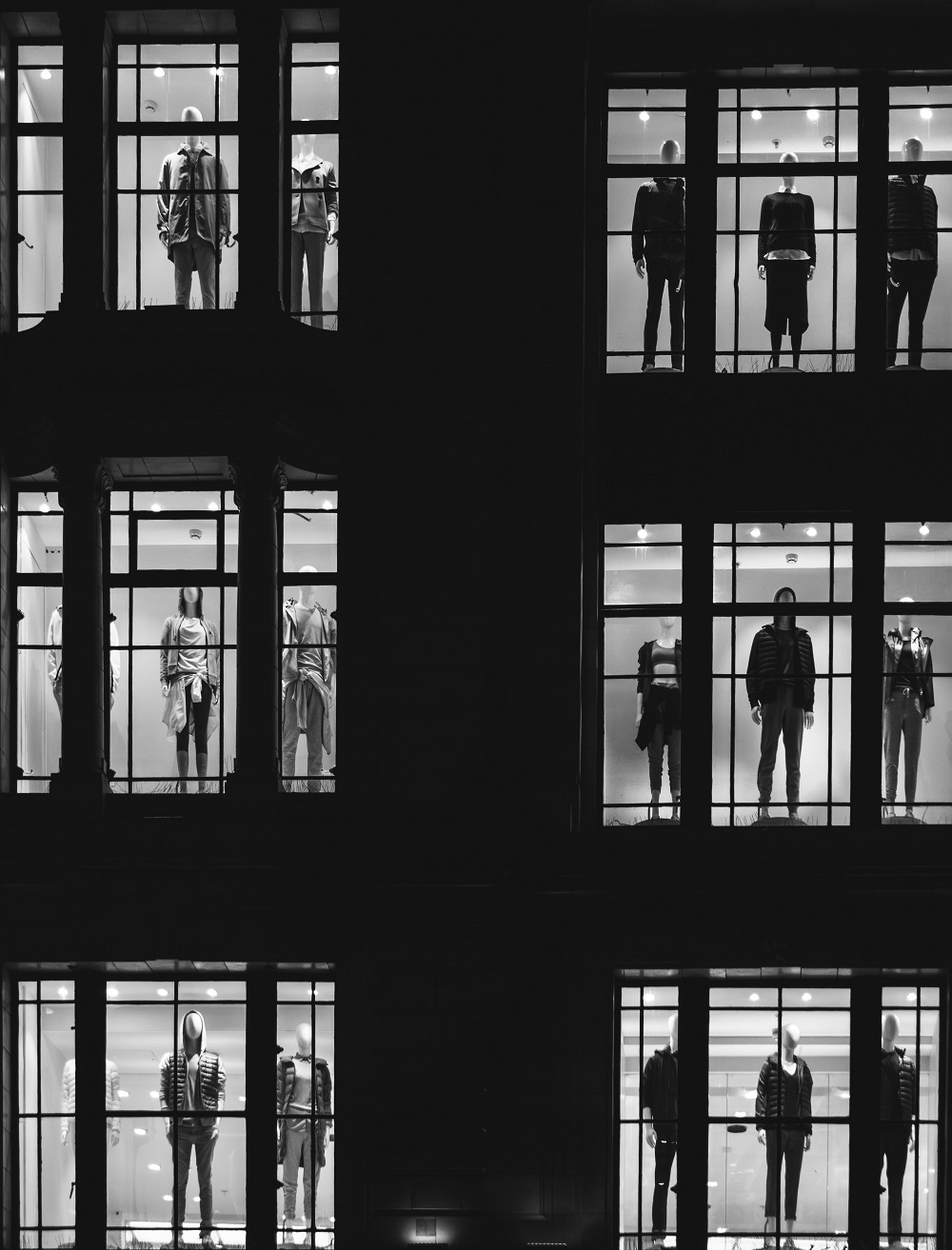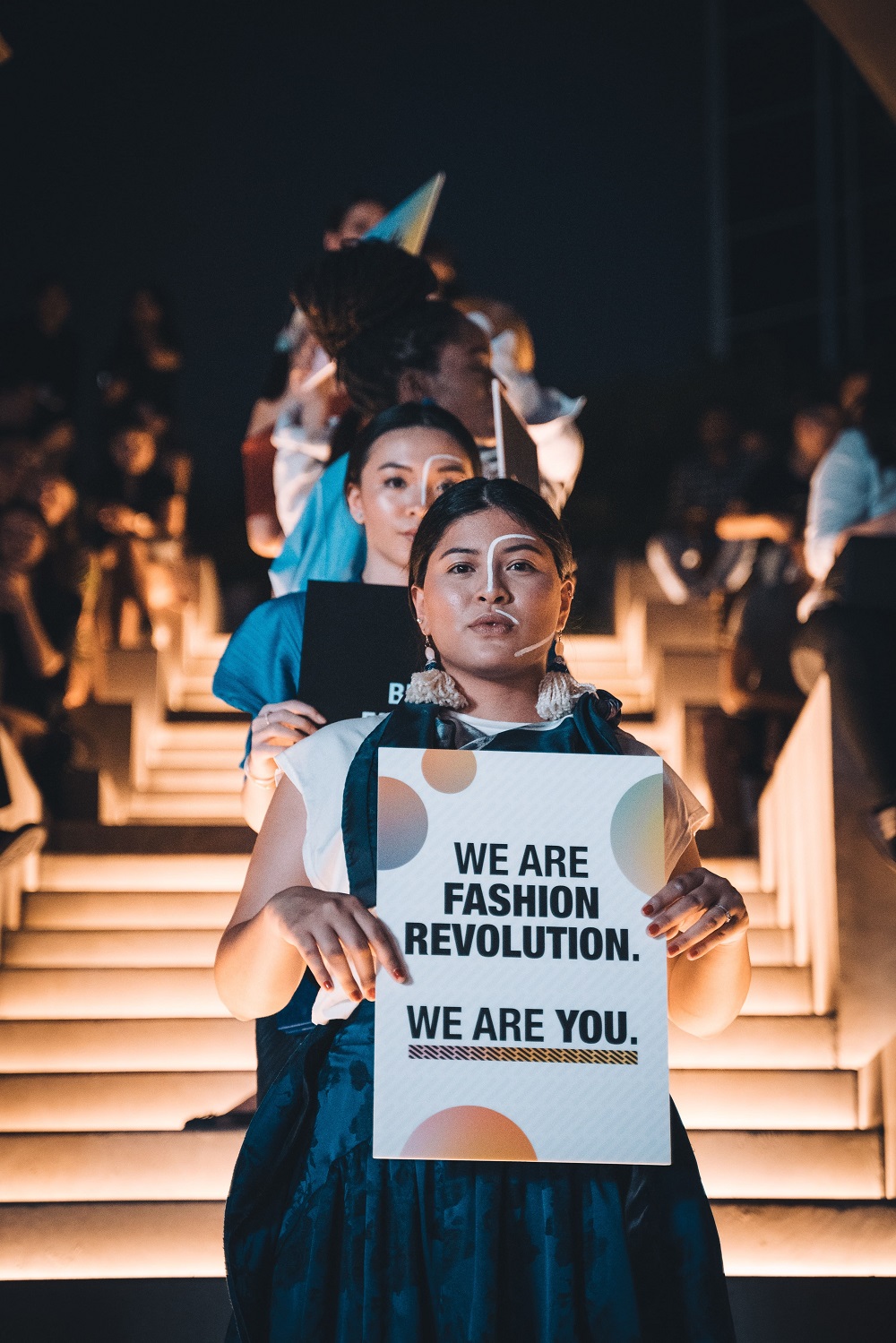We enjoy fashion just as much as the next person does, especially when it comes to expressing our personality through entertaining outfits, gorgeous accessories, etc. What's not to like about it?
To name only a couple, there is a significant violation of human rights and devastation wreaked upon the natural ecosystem. Every year, the fashion industry generates 2.1 (Fashion Discounts) billion tonnes of carbon dioxide emissions.
The concept of environmentally responsible clothing is not exactly cutting edge. At this point in time, the vast majority of big fashion brands that aspire to achieve success in the fashion industry include at least one "sustainable fashion item" in their collections. Some companies even offer an entire range of clothing that is solely devoted to eco-friendly fashion. However, not everything you see can be maintained indefinitely.
It turns out that fashion is a great deal more complicated than things like pencil skirts and shoulder pads, and the widespread practice of greenwashing does not make it any easier to locate apparel that is both ethical and environmentally responsible. It is absolutely necessary for all of us to educate ourselves on what constitutes a really sustainable and ethical fashion in this day and age, despite the fact that the path towards sustainability, in general, isn't an easy one.
This article will teach you just that, beginning with an analysis of the raw materials that are used and ending with a discussion of the activities that are carried out at each stage of the supply chain.
.jpg)
Fashion Industry and Environmental Issues
A significant amount of carbon emissions, the consumption of water, and the disposal of textile waste are all caused by the fashion sector. The industry of fast fashion, in particular, has the biggest influence on the environment and social sustainability; the clothing that is generated in this industry is typically poorly made and made with materials that are not appropriate. Greenhouse gas emissions from the fashion industry account for 8-10% (Good Maker Tales) of global emissions. That's more than all the aeroplanes and ships in the world put together.
Shopping in an ethical manner is not merely a passing fad. Each year, a significant number of people in the United Kingdom go through what might be described as a "green awakening." This refers to the phenomenon in which individuals make the decision to shop in a manner that is less harmful to the environment.
The growing economic challenges of the past several years have forced consumers to find more imaginative methods to spend less money, such as repairing clothing and selecting goods that are more durable. This raises the question: are individuals opting to shop more ethically because they are forced to, or is it a choice made of their own volition? Our educated guess is that it's a mix of the two, particularly given the fact that ethical firms are continuously developing new products that offer consumers more environmentally friendly choices.
What Does 'Sustainable' Fashion Mean?
Brands that practice sustainable fashion design clothing in a way that not only lessens their negative impact on the natural world but also takes into consideration the well-being of the individuals whose labour goes into making the outfits. Simply said, it refers to clothing that is manufactured in an ethical manner and is kind to the environment. While all of this may appear to be straightforward, the reality is that achieving sustainability requires incurring higher overhead costs, which in turn lowers profit margins.
If consumers want the industry as a whole to become sustainable, they either need to be ready to pay more to contribute to the transformation or, at the absolute least, they need to stop purchasing products from companies that do not care about the environment. This shift in the zeitgeist appears to be starting to take place, as consumers who are younger and more environmentally conscious are becoming more powerful in marketing demographics.

What Is Sustainable And Ethical Fashion?
Sustainable fashion prioritizes social and environmental well-being without sacrificing profit or style when sourcing, manufacturing, or designing garments. Both ideas share some common ground ideologically, but they focus on different aspects of the fashion industry's future.
Sustainable fashion is an approach that actively works to improve the fashion industry and its goods without compromising environmental or social standards. Moreover, ethical and sustainable fashion is a method of sourcing, creating, and designing clothing that prioritises social and environmental well-being over profit and style. Both have some ideological overlap, and both are legitimate centres of attention.
The terms "sustainable fashion" and "ethical fashion," like the terms "natural" and "organic" in the food and cosmetics industries, lack a clear definition.
One beneficial aspect of this is that they are dynamic ideas that may be tweaked in light of new information and shifting values; this is especially true of the subjectively named "ethical," which benefits from this dynamic character.
On the other side, there are many who believe that brands and companies can make sustainable and ethical claims based on bogus audits and standards if no official definition exists. In most cases, these phrases do little more than provide marketing lip service meant to greenwash the reality of the situation.
Why is Sustainable Fashion important?
The clothing manufacturing industry is among the most damaging to the environment. The industry is the second largest polluter in the world, behind only the oil sector, and is responsible for twenty percent of the world's industrial water pollution. Many people are taken aback when they learn that the majority of clothing is, in fact, fabricated from plastic, which is a recipe for disaster in the form of microplastics.
When you add to that the millions of toxic chemicals that are used in the textile mills throughout the world, which are detrimental not only to the environment but also to the individuals working with them, it becomes clear that the time has come for a change in the sector on a worldwide scale. This shift must come about in the shape of environmentally conscious clothing. The market for sustainable clothing is expanding at a rate of 8.3% per year on average. By 2030, (The Roundup), this might be up to 9.7 percent annually.
.jpg)
Follow these rules to be more in accordance with sustainable fashion
Being conscious of the effect that the clothing we buy has on the surrounding environment is the most important thing we can do to promote sustainable fashion. You should be familiar by this point with the most prominent examples of sustainable fashion, such as ethical, slow, vegan, eco-friendly, fair trade, recycled, and upcycled clothing and accessories. As you continue your exploration and shopping, you should make sure that the companies whose products you are purchasing are doing what they can to reduce the negative impact their operations have on the environment while also making efforts to improve the working conditions of their employees.
Check to see if the label is actually sustainable; just because a company sells vegan handbags or vegan leather jackets does not mean that their products are likewise kind to the environment. By repairing, recreating, upcycling, and otherwise reusing your things, you may lengthen the amount of time your clothes and accessories will look and feel like new. Make sure the companies you buy your clothes from are environmentally responsible and that they take into account the local ecosystem when designing their products. Companies that produce their goods in a manner that does not result in the emission of carbon dioxide and makes use of renewable energy sources such as wind, solar, and ocean power throughout the entire manufacturing and recycling processes.
Sustainable Clothing Brands to see in 2023
-
FRANKIE - Women’s upcycled streetwear
-
Cleobella - Patterned dresses & tops
-
Soluna Collective - Versatile layers
-
Two Days Off - Made-to-order linen tops, skirts, & pants
-
People Tree - UK eco-friendly clothing
-
Back Beat Co. - Tencel & hemp apparel
-
Avocado - Sleepwear & loungewear
-
Thought Clothing - UK organic clothing
-
Organic Basics - Activewear & undies
-
Boody - Bamboo underwear & basics
-
Tentree - Graphic tees, joggers, loungewear, & outerwear
-
Eileen Fisher - Organic linen clothing
-
VETTA - Capsule wardrobes
-
Pact - Fair trade organic cotton basics
-
For Days - Organic cotton basics, breezy linen
-
Kotn - Egyptian cotton wardrobe staples
-
Quince - Affordable silk & cashmere
-
Sézane - Elegant workwear and knitwear
-
Reformation - On-trend sustainable clothing
-
ADAY - Comfortable, minimalist workwear
-
ABLE - Feminist brand supporting women
-
Summersalt - Swimwear & activewear
-
Patagonia - Fair trade outdoor clothing
-
Tentree - Cozy, casual essentials
-
Boden - Dresses for any occasion
-
Whimsy + Row - Feminine tops & matching sets
-
Outerknown - Jeans
-
Made Trade - Sustainable and fair trade essentials, dresses & loungewear
-
Levi’s - Children’s & teen’s denim
-
Boody - Bamboo workout clothing
-
MATE The Label - Loungewear
-
Fair Indigo - Organic basics
-
Tradlands - Cardigans & dresses
-
Fair Trade Winds - Wide range of fair trade brands
-
Christy Dawn - Petite & extended sizing dresses
-
Girlfriend Collective - Recycled activewear
-
Cuyana - Cuyana
-
Avocado - Breathable & cozy pajamas
-
Amour Vert - Patterned tops & tees
-
LACAUSA - Jumpsuits & trousers
-
Hackwith Design House - Hackwith Design House
-
United By Blue - Eco-friendly outdoor clothing
-
Encircled - Convertible clothing for travel
-
Sotela - Flexible fits

Fashion Forecast and Fashion Trend
More and more shoppers in recent years have put a premium on supporting ethical businesses. They may choose to shop at stores that share their values, such as those that don't do animal testing, are cruelty-free, and have products made from recycled materials.
Materials like faux fur have been having a moment as of late, especially on the catwalks of major fashion weeks across the world. As more individuals look for eco-friendly alternatives, the demand for natural materials like fur and leather drops.
Future fashion trends will be set and altered by two primary factors: sustainability and digitisation. There is no brand or store that can escape them. The two concepts, sustainability and digitisation, are not incompatible. Many sustainable innovations, in fact, can be realized solely through digital procedures. Sustainable apparel and digital fashion have come a long way in recent years. The range is intended to be modified for smaller or more specific target groups, with a focus on ease of use and novelty.
While organic is where we are now, regenerative agriculture is where we will be in the future. This implies that, in light of climate targets, businesses should increasingly prioritize sourcing raw materials that have been produced in a climate-positive manner, in addition to sourcing sustainably. That is, they reduce their personal contribution to global warming. It seems logical to focus on the items themselves, as for most clothing companies, this is the single largest contributor to their overall carbon footprint.
Sourcing cotton, for instance, only from farms that employ carbon-sequestering eco-agriculture techniques is one way to meet this goal.
Ethical and Fair-trade Fashion
Sustainable styles include those that are ethical and fair trade. Concern for the well-being of the fashion industry's workforce is at the heart of ethical and fair-trade initiatives. That includes issues of child labour, equality between the sexes, protections for workers, ethical production practices, and fair pricing. Activity-based delineation is possible for both Ethical Fashion and Fair-trade Fashion.
Businesses, campaigners, and labels that practice "ethical fashion" are concerned with their employees' emotional and physical well-being. Conversely, Fair-trade organizations and businesses make sure that farmers and manufacturers get paid fairly for their goods. The two terms, when used interchangeably, encompass the business and culture of the fashion industry as a whole.
Eco-friendly or ‘Green’ Fashion
Both terms refer to the damage done to the environment by the textile and clothing industries. Consider the ways in which human activity has contributed to the global climate crisis, such as by producing waste, polluting water and soil, and using resources carelessly. Most clothing companies still use plastics and other non-biodegradable fibres that have a significant negative impact on the environment.

The green fashion industry proposes a replacement for plastics: natural, biodegradable fibres that are good for the environment. So far, things look promising, with an increasing number of businesses adopting green materials like organic cotton, hemp, mushroom leather, kelp leather, etc.
Vegan and Cruelty-free Fashion.
Vegan and cruelty-free fashion refers to items that are made without the use of any components derived from animals or obtained through any form of exploitation. Similarly, the goals of vegan and cruelty-free fashion activists are to educate the public about the horrors of factory farming and animal exploitation in the fashion industry. Some people claim that the environmental damage caused by vegan clothing outweighs the benefits.
More recently, supporters of the vegan fashion movement have insisted that a vegan clothing brand must also consider its environmental impact in order to be considered a "sustainable fashion brand." Brands that pride themselves on being cruelty-free and vegan often do so by substituting faux leather made from plants, fruits, mushrooms, or even in the lab for real leather.
Slow Fashion – as in slow manufacturing.
The phrase "slow fashion" was used relatively recently to represent an approach to garment production that is diametrically opposed to "rapid fashion." Because slow fashion is made by skilled artisans as opposed to mass-produced in factories, the term "artisanal fashion" is used to characterize it. However, pollution and resource depletion aren't caused by merely production waste and the usage of scarce commodities.
Upcycled Fashion.
As a word, "Upcycled Fashion" refers to the practice of making new clothing using previously owned or otherwise previously used textiles, materials, and garments. This aspect of recycled, eco-friendly fashion is so popular among today's designers and A-listers that it's giving rise to a brand-new category of high-end luxury wear. Upcycled Fashion is more than just a trend that involves repurposing old clothes by making them out of new fabrics, as each item of clothing made from a vintage textile tells a unique story about its previous owner.
Using previously owned materials in the creation of new clothing is a great way to make something truly one-of-a-kind. Because of this, every couture item made using Upcycled Fashion will be one of a kind and, therefore, extremely rare. Nonetheless, there is a division of opinion on whether or not Upcycled Fashion is actually helpful in the quest for sustainable fashion.

Thrifting, Swapping, Sharing, Renting Fashion.
Sustainable fashion practices include buying secondhand, borrowing, sharing, and renting apparel. Thrifting, the practice of purchasing new clothing from secondhand and charity shops in order to lessen one's carbon footprint, is a great approach to mitigate the destructive effects of the fashion industry. Since these garments already exist, there is no need to make more.
Plus, no additional pesticides or hazardous chemicals are used, and no glasshouse emissions are released. However, there is a disadvantage to renting, thrifting, trading, and sharing that is not as widely known.
Circular Fashion – reuse of discarded and recycled materials.
Similarly, Circular Fashion is a fantastic illustration of eco-friendly clothing. The word refers to "closed-loop" systems, which are methods in manufacturing that try to recycle and reuse scraps and other byproducts. The developments in circular fashion are varied. "Closed-loop" systems in fashion are primarily based on recycling polyester and other plastic-based materials, which are then reprocessed for use as part of fashion production.
Conscious Fashion – consumers’ role
Most consumers perceive Conscious Fashion as their solution to the issues brought on by Fast Fashion. Consumers have a significant impact on the environmental cost of fashion through their purchasing decisions and the length of time they keep garments.
Fast fashion has resulted in a significant reduction in the frequency with which items are worn. The decline in product quality and the unquenchable urge to follow and display the current fashions are both to blame. Therefore, advocates of Conscious Fashion seek to teach customers why it's better to go gradually rather than quickly or how to better take care of their clothing.
Read Also - How Businesses Can Improve Their Sustainability Performance With ESG.

Building a Greener and Sustainable Future
While previously regarded as nice to have, brand attitudes are changing toward accountability in 2023 and beyond. The epidemic refocused attention on sustainability and clean energy. Previously a broad concern, sustainability is now a primary emphasis of every brand. As a result, there has never been a better opportunity to assess where firms are and what improvements can be made in the short and long term to minimise their carbon footprint.
Brands of all sizes are working to address the growing climate change crisis. It is no longer part of the brand's mission statement but has emerged as a collective basic concept motivating them to perform critical activities.
Brands are now creating new long-term strategies. They are increasing their efforts to reduce their environmental effect by implementing more efficient technology. This enables them to ensure the well-being of their employees while conducting business in a transparent manner. Brands that do not prioritize sustainability will most certainly fall behind in this battle by 2023.
With a presence in New York, San Francisco, Austin, Seattle, Toronto, London, Zurich, Pune, Bengaluru, and Hyderabad, SG Analytics, a pioneer in Research and Analytics, offers tailor-made services to enterprises worldwide.
A leader in ESG Services, SG Analytics offers bespoke sustainability consulting services and research support for informed decision-making. Contact us today if you are in search of an efficient ESG integration and management solution provider to boost your sustainable performance.









